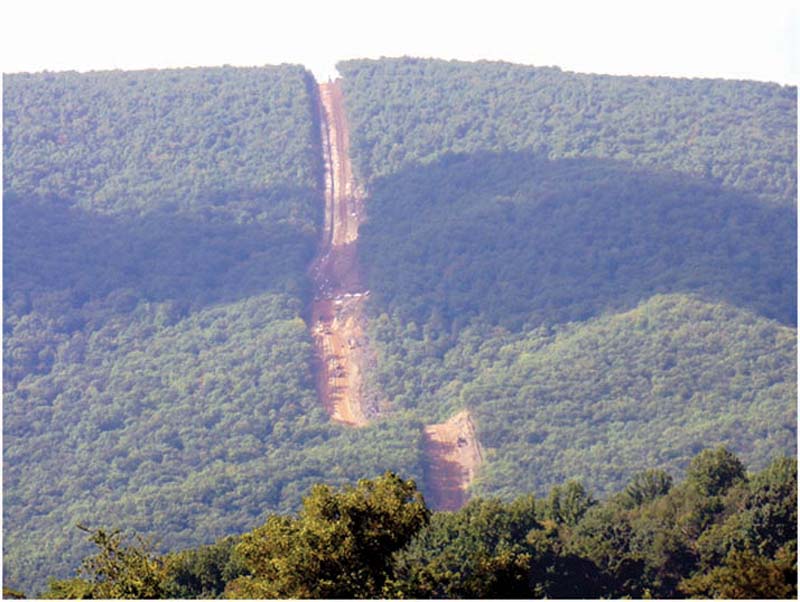There has been a lot going on in oil and gas these past two weeks, so we’re going to go ahead and post this a couple weeks early.
If Libya were to start producing a lot of oil again, it would probably drive the price of oil down some. There was some expectation that they would start up again soon, but that expectation is now gone. A general has seized control of all the oil ports in Libya, in opposition to the coalition government. The government had been losing popular support for some time. Perhaps the general will step in and take control of everything and start production back up. Even if he does, it will take some time. We don’t expect Libya to affect oil prices for the rest of this year.
Venezuela says that OPEC and non-OPEC countries (Iran) are close to an agreement that would limit oil production. We’re still skeptical that an agreement will be reached. After all, there was some belief that the Doha meeting back in April would be successful, though I rather suspect that was more wishful thinking on the part of some people than reliance on facts.
It seems that Libya is producing oil again. Reports of two tankers with a total of over a million barrels of oil have left the country. A Libyan official has stated that they will be producing 600,000 barrels per day within a month, and over 900,000 barrels per day by the end of the year. If that actually happens it will drive the price of oil down some. Whether it actually happens is not something I would bet on. Libya is a pretty unstable country after all. I’d let time tell on this one.
A surprising number of American companies have been able to avoid bankruptcy during the downturn in oil and natural gas prices. They’ve had to cut costs and increase production. One of the major factors in increasing production has been increasing the amount of sand that is flowed into the fracks. The linked article goes into some detail that would be interesting if you’re thinking of investing in sand supply companies.
There is a lot of data in this study by Deloitte. The long and short of it is that the oil and gas industry looks like it’s coming back. Higher prices for both oil and gas are expected in the next couple of years. This jives with what we’ve been reading and experiencing.
Iran has doubled exports from last year. Libya and Nigeria are ramping up exports as well. The increase in production from those countries is going to drive the price of oil down. OPEC is meeting to discuss the possibility of freezing production. Perhaps (but I really think this is a stretch) the specter of prices dropping below $40/bbl again will drive OPEC to actually come to an agreement.
On the other hand, this article from the Financial Post makes the case for a crazy future for oil prices. Basically, it says that the lack of investment in new fields/projects is going to come back to haunt us. It’s worth taking five or ten minutes to read.
While the oil market is interesting, the natural gas market is what really drives development in West Virginia. There isn’t as much written about the natural gas market as it’s not a worldwide commodity with political ramifications. It’s slowly becoming more so. This article over at Forbes talks about how Japan’s use of natural gas is likely to rise, contrary to what most analysts think. Sure hope so. A lot of Japan’s natural gas will come from the Marcellus/Utica area.
Along the same vein of thought, Cheniere Energy has announced that it’s second liquefaction train at the Sabine Pass plant in Louisiana has reached Substantial Completion. In other words, they can start liquefying gas with it. This is interesting for us here in WV because gas from the Utica/Marcellus area will feed the Sabine Pass plant. Demand is growing!
This article from Reuters says that while demand is growing, production is dropping off. We’re looking at a future of stable prices for natural gas, at least for the time being. It will be interesting to see what happens through this next winter.
That was quick, but hardly unexpected. The price of oil is dropping on news that Iran has rejected a deal with Saudi Arabia that would have limited it to producing under 4 million barrels per day. Iran was producing 4.1 to 4.2 million barrels per day before it had sanctions imposed on it, and it is producing about 3.6 million right now. Iran has always stated that it wants to get back to producing over 4 million. Talk has now turned to OPEC’s November meeting. Do I go out on a limb and predict that OPEC will not agree to a production freeze in November? Sure, why not. With the understandable caveat that unpredictable events could change things.
Michael Lynch over at Forbes argues that the long-term price of oil is impossible to determine.
Jim Willis of Marcellus Drilling News attended a conference where two analysts discussed whether the Marcellus/Utica area is going to be able to make up for the slow down in gas production from other parts of the country. Long and short, no. There are a lot of very interesting bullet points in the article.
USA Today ran a story about wind farm projects not getting off the ground. Part of the problem has to do with how the BLM allocates property. The more interesting part of the story was that of 46 wind farms approved by the Obama administration since 2009, only 15 have made it into operation. That kind of track record is going to keep wind power from competing with natural gas for a long time.
So, we were wrong about OPEC! They agreed to agree to a production freeze at their meeting in November. Seems there are some details to work out in the interim. As a result, the price of oil has climbed consistently the last few days. It hasn’t hit $50/bbl yet, but that seems almost inevitable. Interestingly, the price of oil has hit $50/bbl once already this year. If I recall correctly, that was also on speculation that a production freeze was in the future. Will they end up freezing production? Maybe. I still rather doubt a production freeze will happen. It just doesn’t make sense when American production companies can ramp up production pretty quickly and you’re giving them two months heads-up. But I was wrong about this, I could be wrong about that, too.


